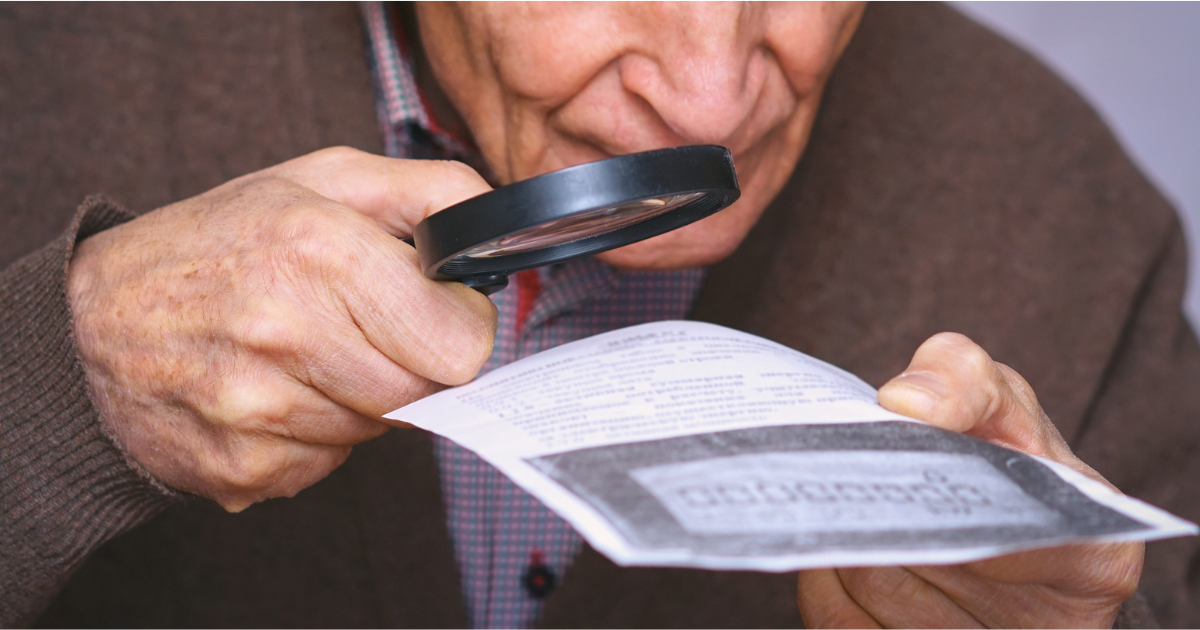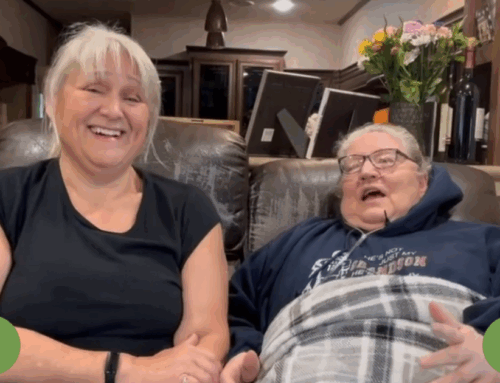As we age, so do our eyes. According to data collected by the National Eye Institute (NEI) of the National Institutes of Health, by the age of 60 most of us will have experienced changes to our vision. Perhaps we need glasses to read, or have trouble adjusting to glare, or certain colors have started to look the same.
These changes are normal and people typically deal with them successfully by using brighter lights and reading glasses. But as we continue to age, we become more likely to develop eye diseases that can damage parts of the eye resulting in a condition known as “low vision.”
According to the NEI, “Low vision is a vision problem that makes it hard to do everyday activities. It can’t be fixed with glasses, contact lenses, or other standard treatments like medicine or surgery.” Reading the mail, shopping, cooking, watching TV, and writing can be challenging for a person with low vision.
The NEI describes some of the more common eye diseases:
- Age-Related Macular Degeneration: An eye disease that gradually destroys central vision which means you cannot see details straight in front or ahead of you.
- Cataract: A common condition in which the eye’s lens becomes cloudy or develops areas that block light from passing through. Symptoms include blurry vision, colors that seem faded, sensitivity to light, and trouble seeing at night.
- Diabetic Retinopathy: This condition affects the blood vessels in the retina. It is a complication of diabetes and can lead to bleeding into the retina causing blindness.
- Glaucoma: A group of eye diseases that cause damage to the optic nerve located in the back of the eye. Glaucoma can result in the loss of side (peripheral) vision, overall vision loss, and blindness.
A normal response to experiencing low vision or eye disease is fear, a sense of being alone and worry that others don’t understand. Older adults with this condition also report feeling depressed or angry about things they think they can no longer do.
Several other factors make low vision a challenging condition for older adults:
- Low vision is an invisible disability, so others may not recognize what the person is going through.
- As it’s difficult to recognize this disability, the person, particularly if they are older, may become less sociable and start to self-isolate.
- As with other chronic conditions, a person with low vision may lose confidence and become depressed.
Other than preventing diabetes and not smoking there are few things we can do to prevent vision loss. However, early diagnosis is an important step in taking charge of one’s health and maintaining independence. A preventive eye exam done every 2 to 4 years should be a regular part of one’s health routine. After age 65 people should have their eyes checked more frequently in order to catch early symptoms of eye disease.
The goal for those who work with seniors with low vision is to help them adjust to a new normal and enjoy the maximum quality of life with the vision they have left. This is made easier through the use of extensive adaptive equipment that can improve a person’s functional abilities. Paid caregivers who believe their client could benefit from one or more of these adaptive aids should speak with their supervisor. Some of the most useful of these products include:
- Handheld or desktop digital electronic magnifiers
- Portable Closed Circuit TV (CCTV) magnifiers
- Telephone with large keypad
- Talking clocks and watches
- Large button TV universal remote
- Devices to scan and voice a printed document or book
- Software to magnify a computer-screen view or to have what appears on the computer screen voiced or brailled
- Adaptive aids for the home such as dots and bumps for marking points on a stove, microwave, washer, dryer, keyboard, cell phone or other appliances
- White canes for safe walking
- Quality sunglasses with glare protection
A diagnosis of low vision can be devastating, impacting an individual’s confidence and ability to manage their health and medications as well as complete ordinary tasks. Caregivers who work with someone who has low vision can help by encouraging them to do as much as they can while also providing support not only with everyday chores but also with activities that help them stay connected with others such as visiting with friends, and looking at email and reading mail.
Resources
- The Lighthouse for the Blind
- WA State Department of Services for the Blind
- Idaho Commission for the Blind & Visually Impaired
- VisionAware support groups






